Editor's note: in July 2013, Corton closed.
Corton is a 65 seat TriBeCa restaurant serving modern French food which opened in October 2008. Chef Paul Liebrandt is British and trained at some top UK restaurants, then spent a year with Pierre Gagnaire in Paris before moving to the USA. He was head chef at Atlas, Papillon and Gilt before opening Corton. The Corton dining room has large tables with good quality linen tablecloths, carpet and no music, so unlike some New York restaurants you do not have to shout to make yourself heard. You have a choice of a seasonal menu at $115 or a slightly longer tasting menu at $155.
The wine list of around 350 or so selections was exclusively French (other than some port), and had some excellent growers, with a few relative bargains amongst the grander wines. Given the name of the restaurant, it not surprisingly had a wide selection of Burgundy. Juliene Meyer Fanny Elizabeth Pinot Gris was $54 for a wine that you can find locally in a shop for around $36, Rollin Corton Charlemagne 2004 was $250 for a wine that costs around $125 retail, and Salon 1996 was $700 for champagne that will set you back an average of $468 in a local wine shop. There was a good selection of the superb Rhine wines of Etienne Guigal, including one vintage of La Turque (1996) that was only a little costlier than its average retail price.
A series of nibbles arrived, starting with a cracker with mornay sauce (a Bechamel with cheese), a financier (tea cake) of red miso (a Japanese fermented rice seasoning) and kombu (seaweed), yuzu (Japanese citrus fruit) saffron "moshi" and a dashi (seaweed stock) gelee with hazelnut cream. The best of these was the mornay cracker, but the red miso financier tasted very odd indeed, the others decent (15/20 average). The bread selection comprised three that were made by the kitchen, and three that were bought in. A brioche was oddly unsweet but had reasonable texture, foccacia was pleasant but quite salty, and a country bread lacked much flavour (14/20 bread). The bought-in walnut crisp bread did not have a lot of walnut taste, while the mini baguette was simply bad, chewy and hard (barely 12/20 for the bought breads); I didn't try the poppy seed bread. The kitchen would be better off making all the bread itself, or at least buying better.
The next nibbles were terrine of pimento, foie gras and Yukon gold potato with mushroom cream. The pimento was the dominant taste, the foe gras hardly coming through, and the terrine was far too salty, even to my taste (13/20 at best). Morel mushroom in a goat milk whey suffered from a poor quality morel that had little flavour. This was accompanied by a Burgundy snail in morel powder with a puree of green peas and white chocolate. The snail had reasonable flavour, though the purpose of the white chocolate eluded me (14/20). Tempura frog leg was next, with frog leg ballotine, carrot sesame purée, black cherry and crispy fennel. The tempura unfortunately had soggy batter, while the carrot added a sweetness that was an odd pairing with the other elements (13/20).
Pickled ramps (an allium widely grown in the US) were served with roast chicken ice cream and asparagus milk. This tasted about as pleasant as it sounds, the flavours jarring (11/20). A tiny piece of crayfish was tucked away inside a tortellini of ricotta, served with peanut, sorrel and burnt eggplant (aubergine) meringue, on top of which was poured a lemon grass broth. The pasta had reasonable texture and the lemon grass broth, which was the main flavour that came through, was fragrant, though the other elements of the dish were barely discernible (15/20).
A Scotch egg using pig trotter meat, brioche breadcrumbs and a quail egg was next. This was decent, but the sweetcorn sauce with it was far too sweet, and its cloying taste was the main flavour that came through (12/20). With it was a pleasant ballotine of guinea hen, served with girolles and an eggplant purée (15/20). As with some other dishes tonight, these two elements were brought together but served on separate plates, rather in the style of Pierre Gagnaire.
At this stage an apple and wasabi sorbet appeared, with smoked Maldon salt, kaffir lime and extra virgin oil. This was not successful, the texture gloopy, the apple the main taste coming through, even the wasabi somehow lost (12/20). This was a particular shame as this was real wasabi root imported from Japan, a wonderful and costly ingredient. Why on earth did they not serve this with a meat course?
Wild Alaskan salmon was served with rhubarb confit, a chutney and Thai red curry sauce. The salmon was good, but the last thing it needed was to be paired with rhubarb and a red curry, the latter quite one-dimensional in flavour (14/20). Rohan duckling was served with taro puff with huckleberry, spring carrot ice cream, with a pistachio and nettle vinaigrette. On the side was pasta with duck confit and fennel, which for reasons that elude me was entitled "shepherds pie". This was the best dish of the meal, the duck nicely cooked, the croquette pleasant, the vinaigrette not too dominant (16/20).
Grapefruit sorbet was served with ginger cream, and whoever prepared this really should have tasted it more carefully before serving, as the ginger was absurdly strong and hot, and was all I could taste for minutes afterwards (10/20). I like both grapefruit and ginger very much, but this dish was just off key. Maple with sour cherry and toast ice cream was much better, the flavours going fairly well with one another (15/20). Following this a series of trays of petit fours was presented, the best of which was a very good guava jelly.
Service was very good throughout the evening, my waitress able to answer questions about the dishes without having to dash off to the kitchen, the sommelier helpful and friendly. It was irritating that an espresso was $6, with a top up charged at another full $6. The bill came to $209 (£134) before service. Overall I found this a disappointing meal. The frustrating thing was that a great deal of effort had clearly gone into the dishes, which were prettily presented. Moreover, the ingredients were good, such as the wild salmon and real wasabi. Yet these ingredients were too often overwhelmed by clashing flavour combinations or one dish element that completely dominated the others.































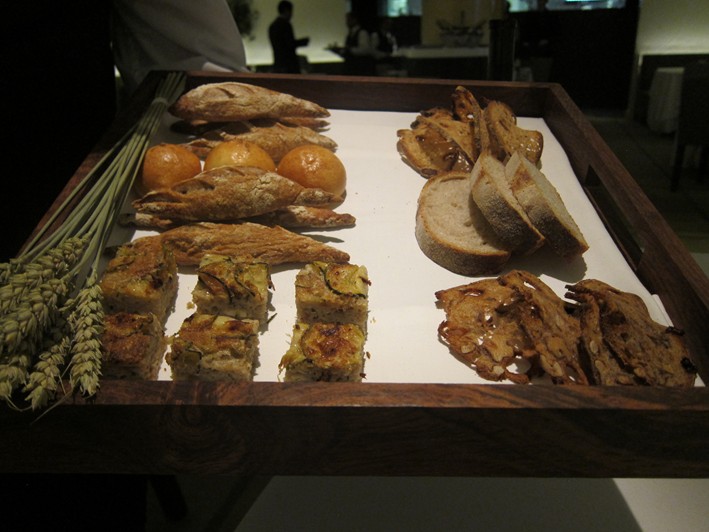
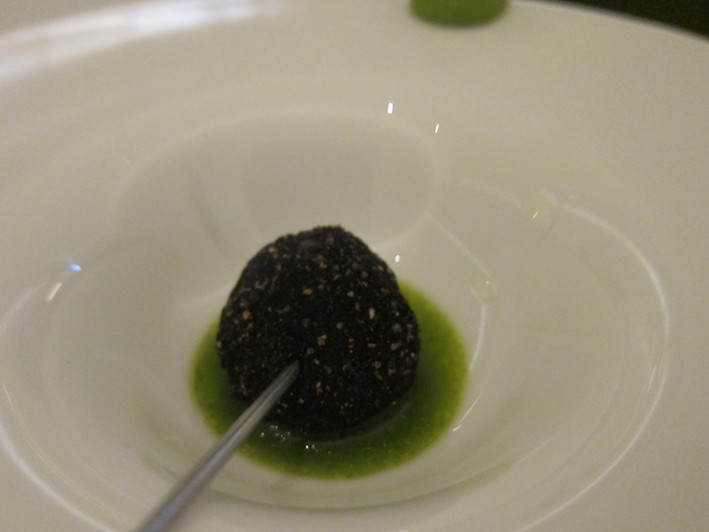
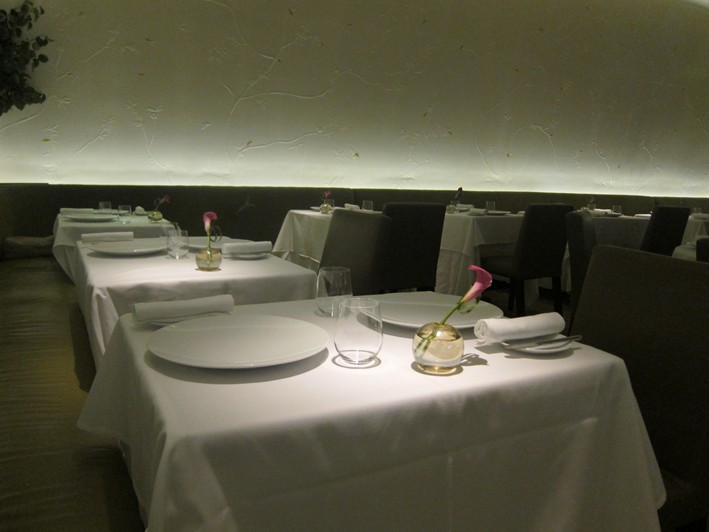
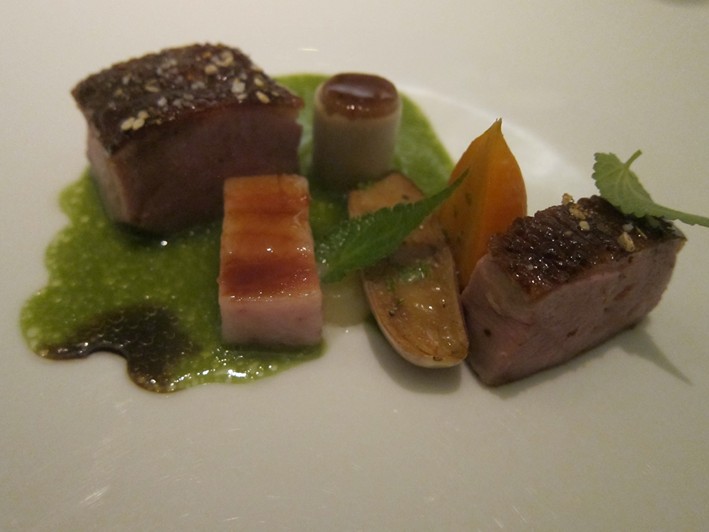
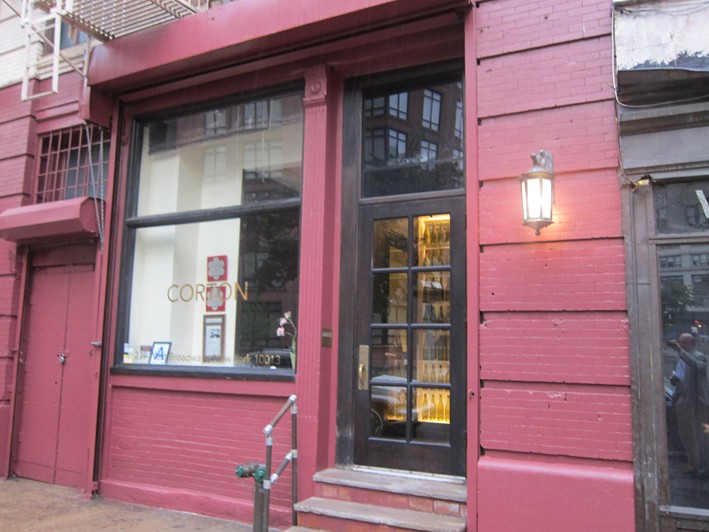
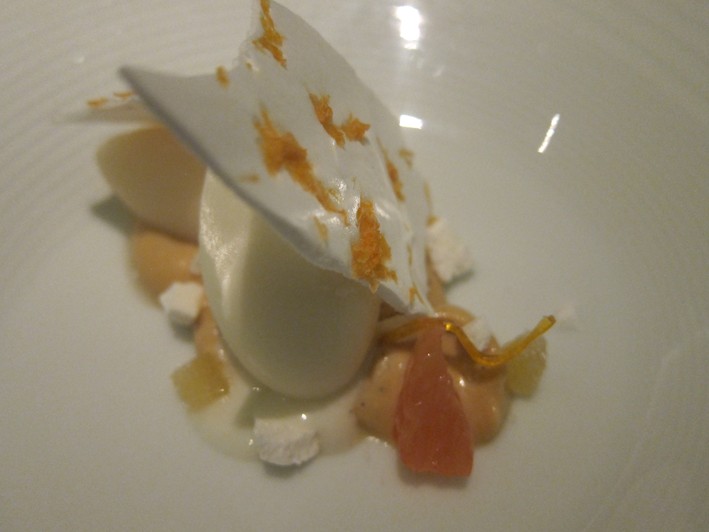
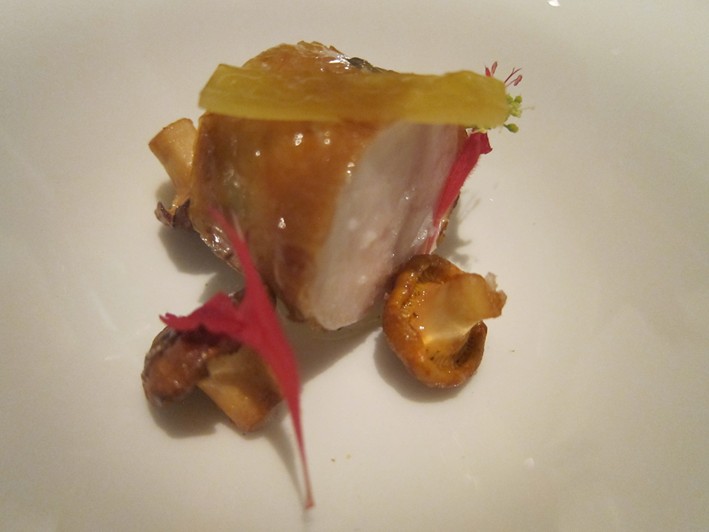
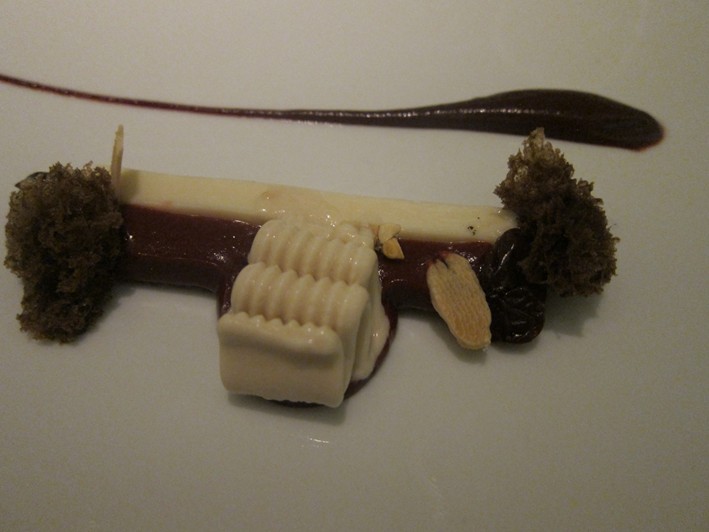
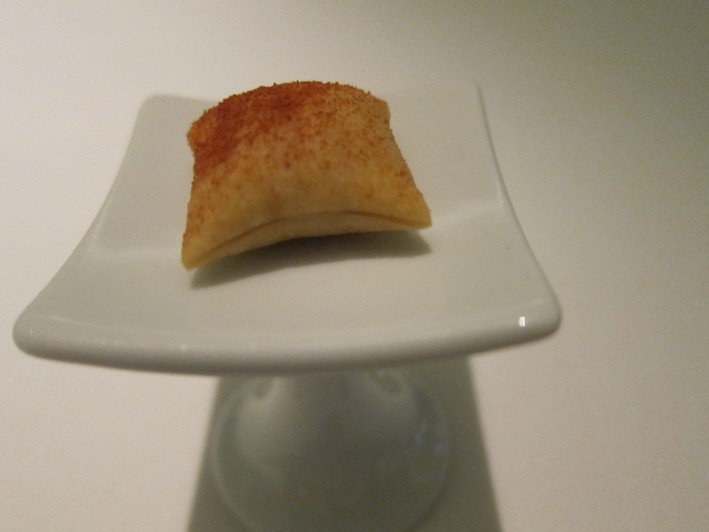
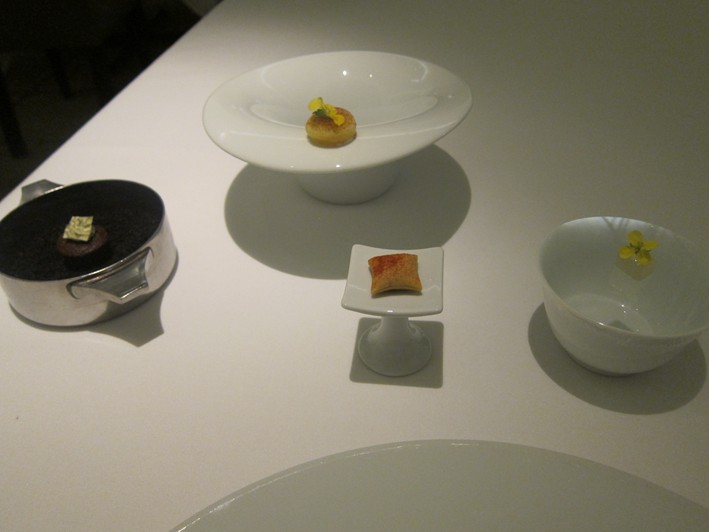
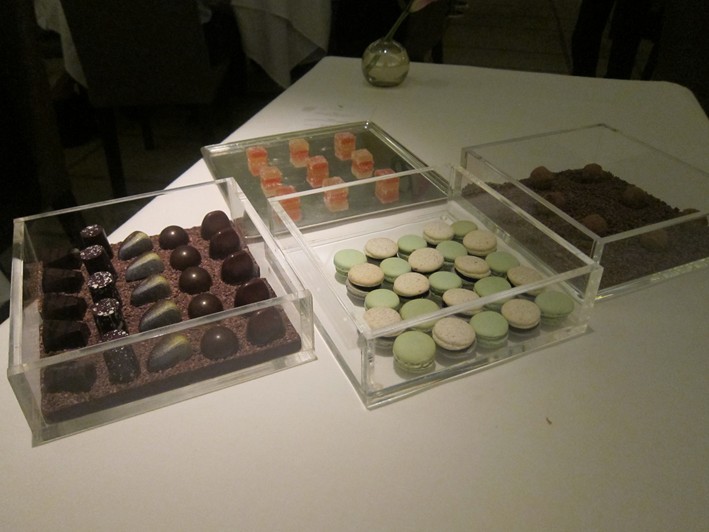
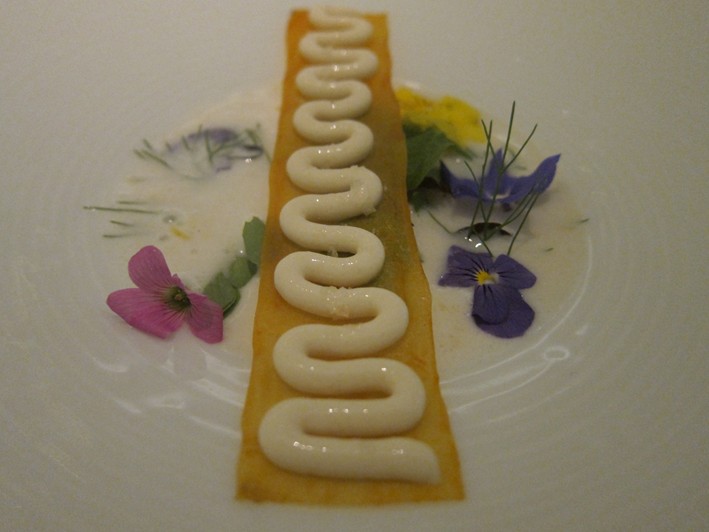
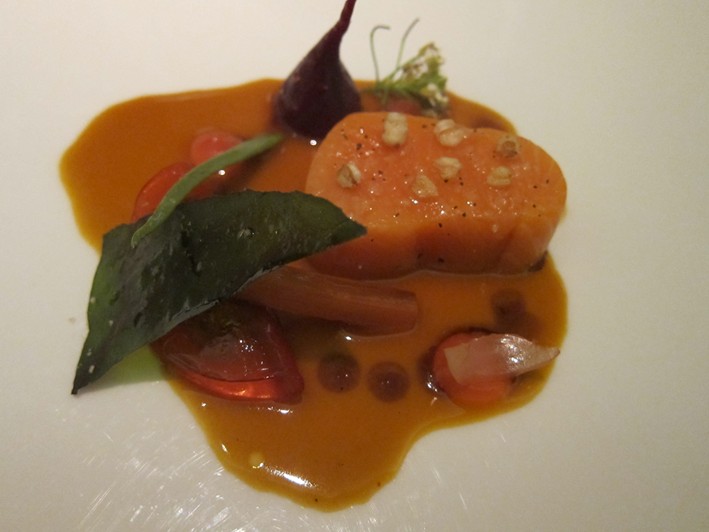

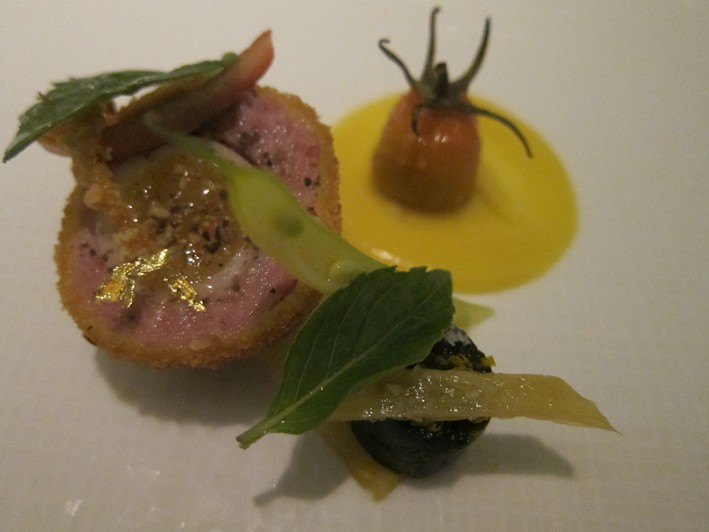

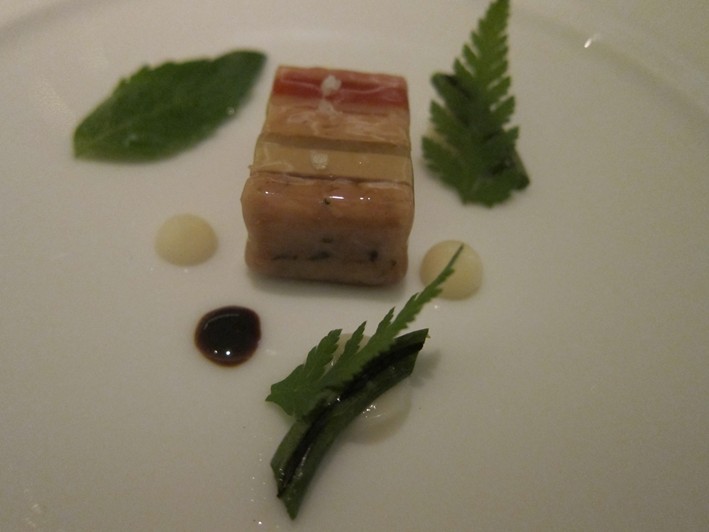
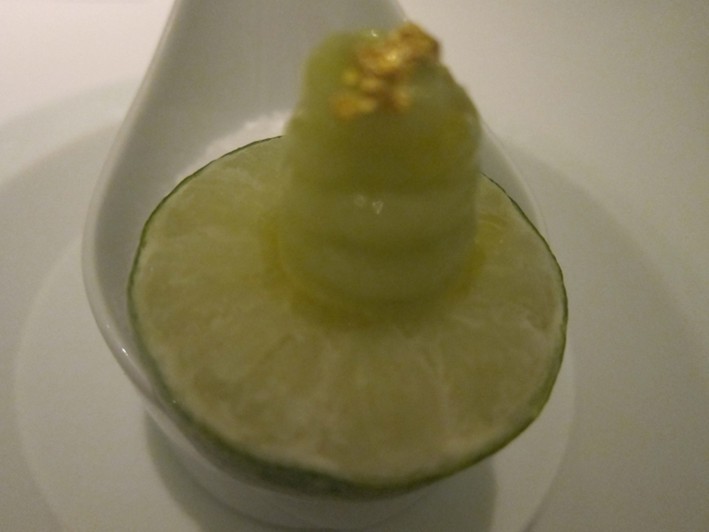
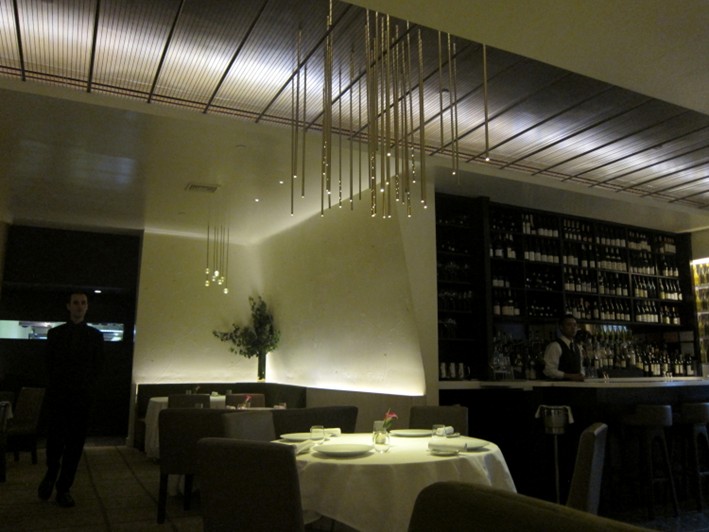
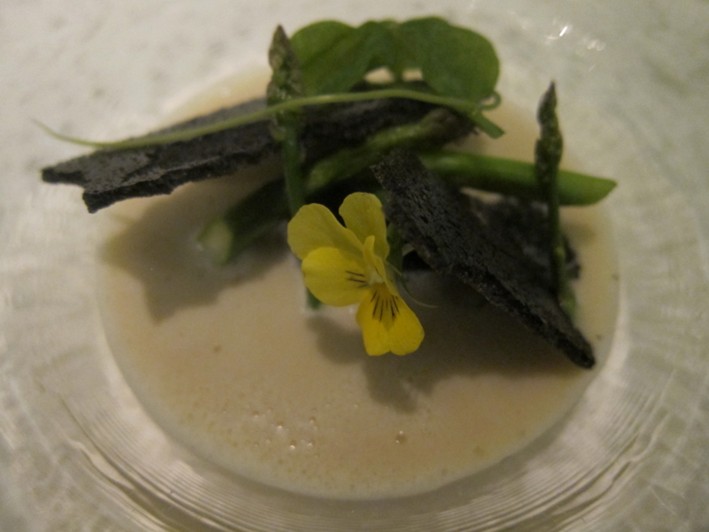
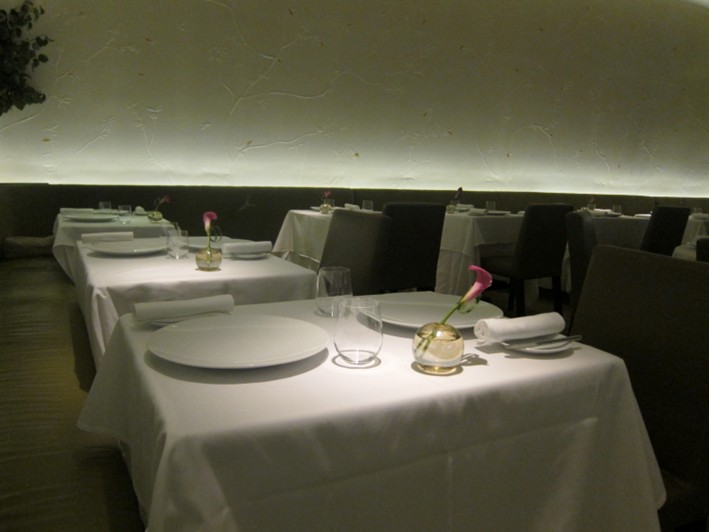

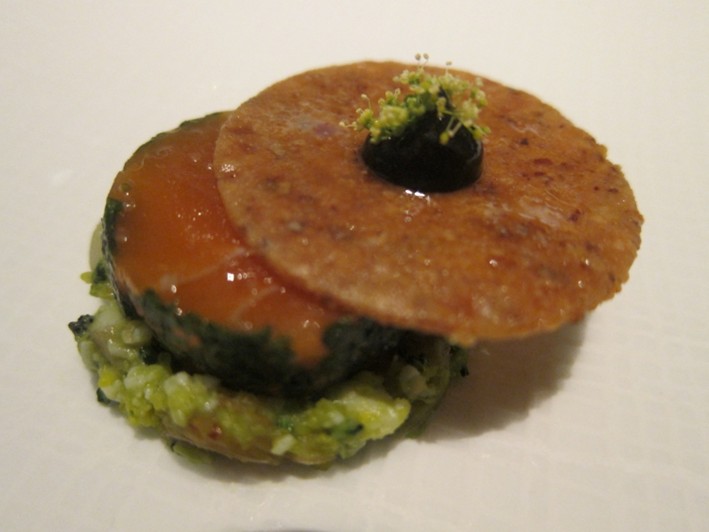

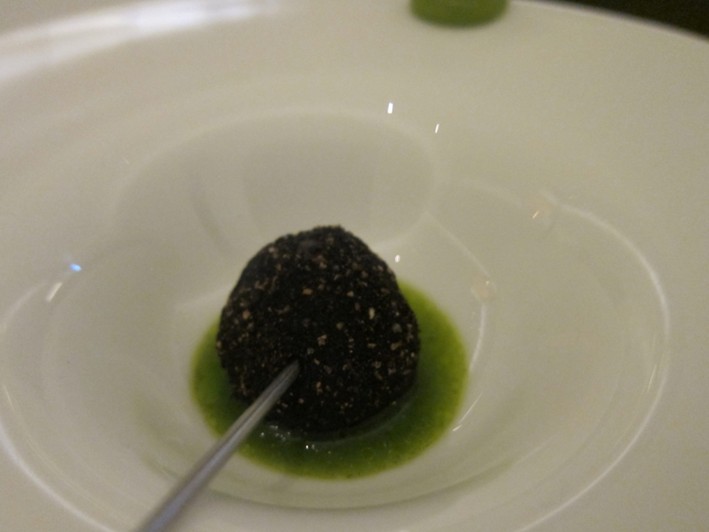
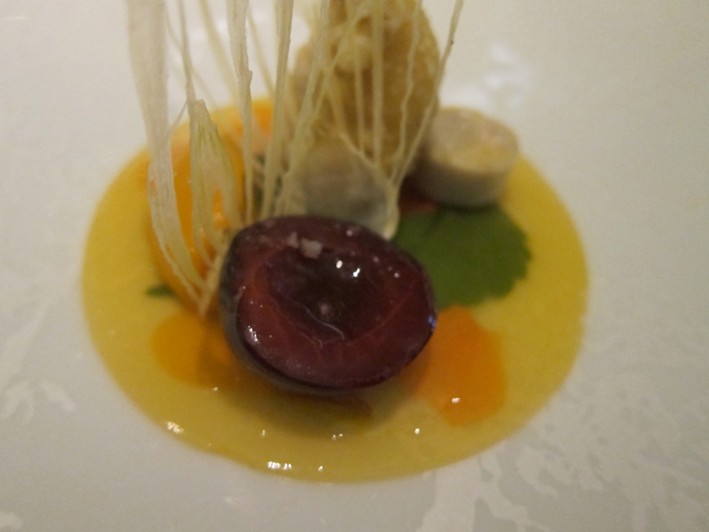

Add a comment
Thank you for submitting your comment, this will be checked and added to the website very soon.
User comments